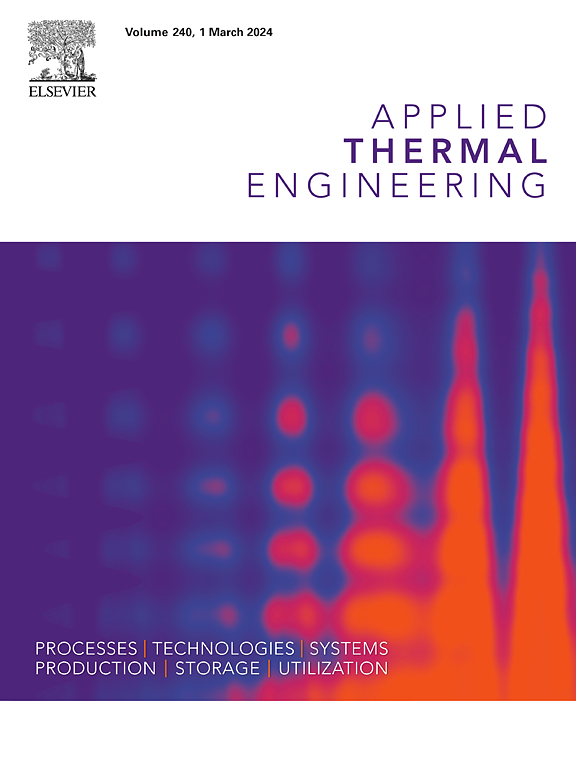Investigation of a hybrid direct/indirect expansion solar-air dual source heat pump system for building application
IF 6.9
2区 工程技术
Q2 ENERGY & FUELS
引用次数: 0
Abstract
Investigation of heat pumps performances to meet climatic, economic and sustainable development requirements expands continuously. Heat pumps using solar-air dual heat sources (DSHP) are widely invested in various configurations and components, and they have demonstrated superior performance. Nevertheless, performance improvement efforts were predicated on the system functioning as either direct-expansion or indirect-expansion DSHP system separately. In this work, the performance of a new configuration of a DSHP system operating in three different modes, direct solar mode (DSM), indirect solar mode (ISM) and both direct/indirect solar mode (D/ISM) is investigated. The system includes a photovoltaic thermal collector, two storage tanks and a heat pump with a composite evaporator. The system supplies domestic hot water and space heating for a residential building located in the coldest region of Algeria.
First, a mathematical model of a direct-expansion single source SAHP was developed. Next, a model of an indirect-expansion DSHP system is created under TRNSYS environment. Subsequently, the two models are integrated to evaluate the performance of the new system.
Results show that throughout the heating period, the system has reached the best performance when operating in D/ISM. The coefficient of performance, seasonal performance and solar fraction are 2.89, 9.19 and 63%, respectively. The parametric study indicates that the system performance is influenced by PVT and solar collector evaporator areas, but the set-point temperature of tanks has little impact. Economically, the D/ISM has the shortest payback period compared to DSM and ISM.
建筑用直接/间接膨胀混合太阳能-空气双源热泵系统研究
为满足气候、经济和可持续发展的要求,对热泵性能的研究不断扩大。利用太阳能-空气双热源的热泵(DSHP)被广泛投资于各种配置和组件,并表现出优异的性能。然而,性能改进的努力是基于系统分别作为直接扩展或间接扩展DSHP系统的功能。在这项工作中,研究了直接太阳能模式(DSM),间接太阳能模式(ISM)和直接/间接太阳能模式(D/ISM)三种不同模式下运行的DSHP系统的新配置的性能。该系统包括一个光伏集热器、两个储罐和一个带复合蒸发器的热泵。该系统为位于阿尔及利亚最冷地区的住宅建筑提供生活热水和空间供暖。首先,建立了直扩单源SAHP的数学模型。其次,在TRNSYS环境下建立了间接扩展式地源热泵系统的模型。然后,将这两种模型结合起来对新系统的性能进行评价。结果表明,在整个采暖期内,系统在D/ISM模式下运行时性能最佳。性能系数、季节性能系数和日照分数分别为2.89、9.19和63%。参数化研究表明,系统性能受PVT和太阳能集热器蒸发器面积的影响,但储罐设定点温度的影响较小。在经济上,与DSM和ISM相比,D/ISM具有最短的投资回收期。
本文章由计算机程序翻译,如有差异,请以英文原文为准。
求助全文
约1分钟内获得全文
求助全文
来源期刊

Applied Thermal Engineering
工程技术-工程:机械
CiteScore
11.30
自引率
15.60%
发文量
1474
审稿时长
57 days
期刊介绍:
Applied Thermal Engineering disseminates novel research related to the design, development and demonstration of components, devices, equipment, technologies and systems involving thermal processes for the production, storage, utilization and conservation of energy, with a focus on engineering application.
The journal publishes high-quality and high-impact Original Research Articles, Review Articles, Short Communications and Letters to the Editor on cutting-edge innovations in research, and recent advances or issues of interest to the thermal engineering community.
 求助内容:
求助内容: 应助结果提醒方式:
应助结果提醒方式:


